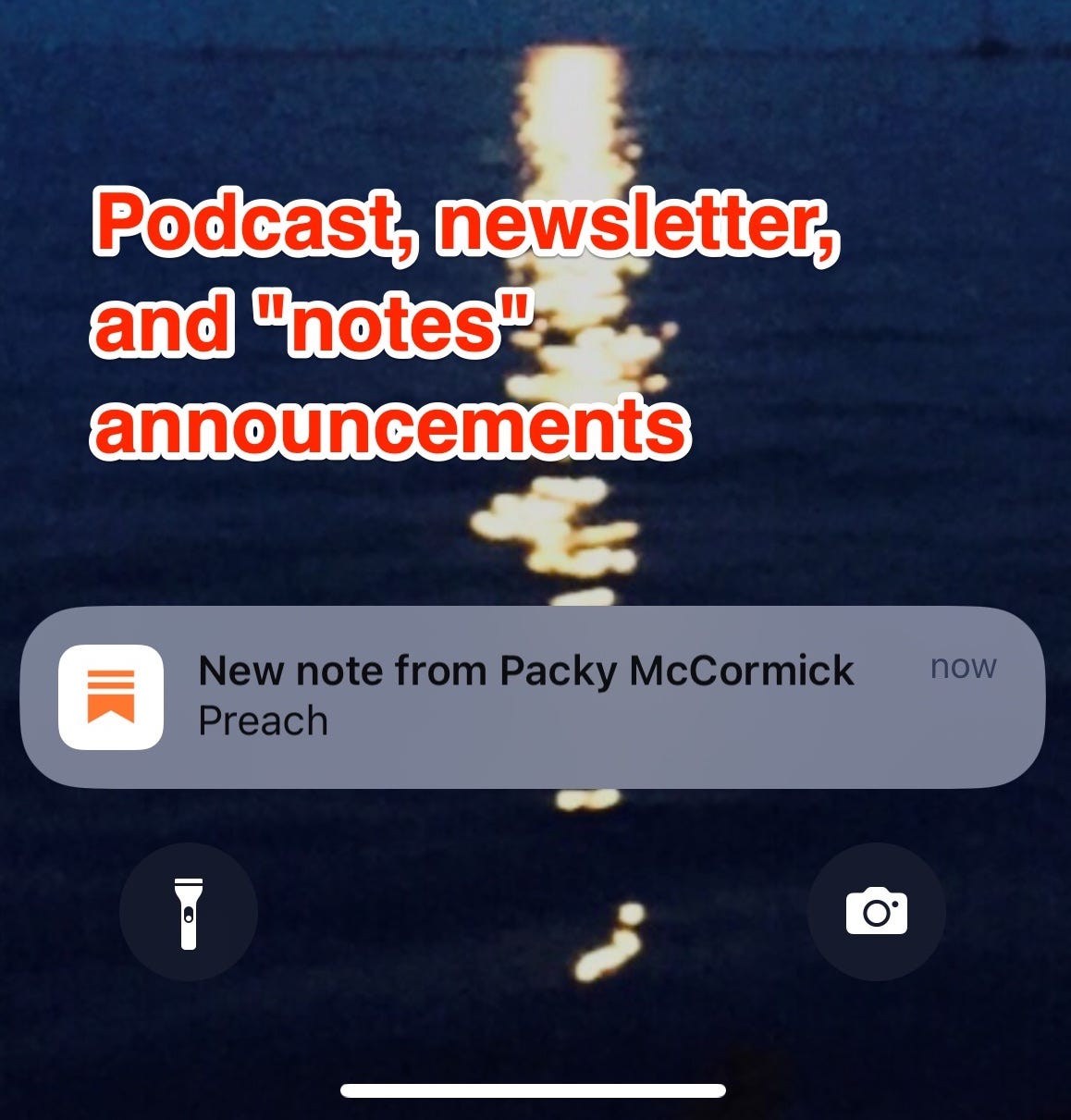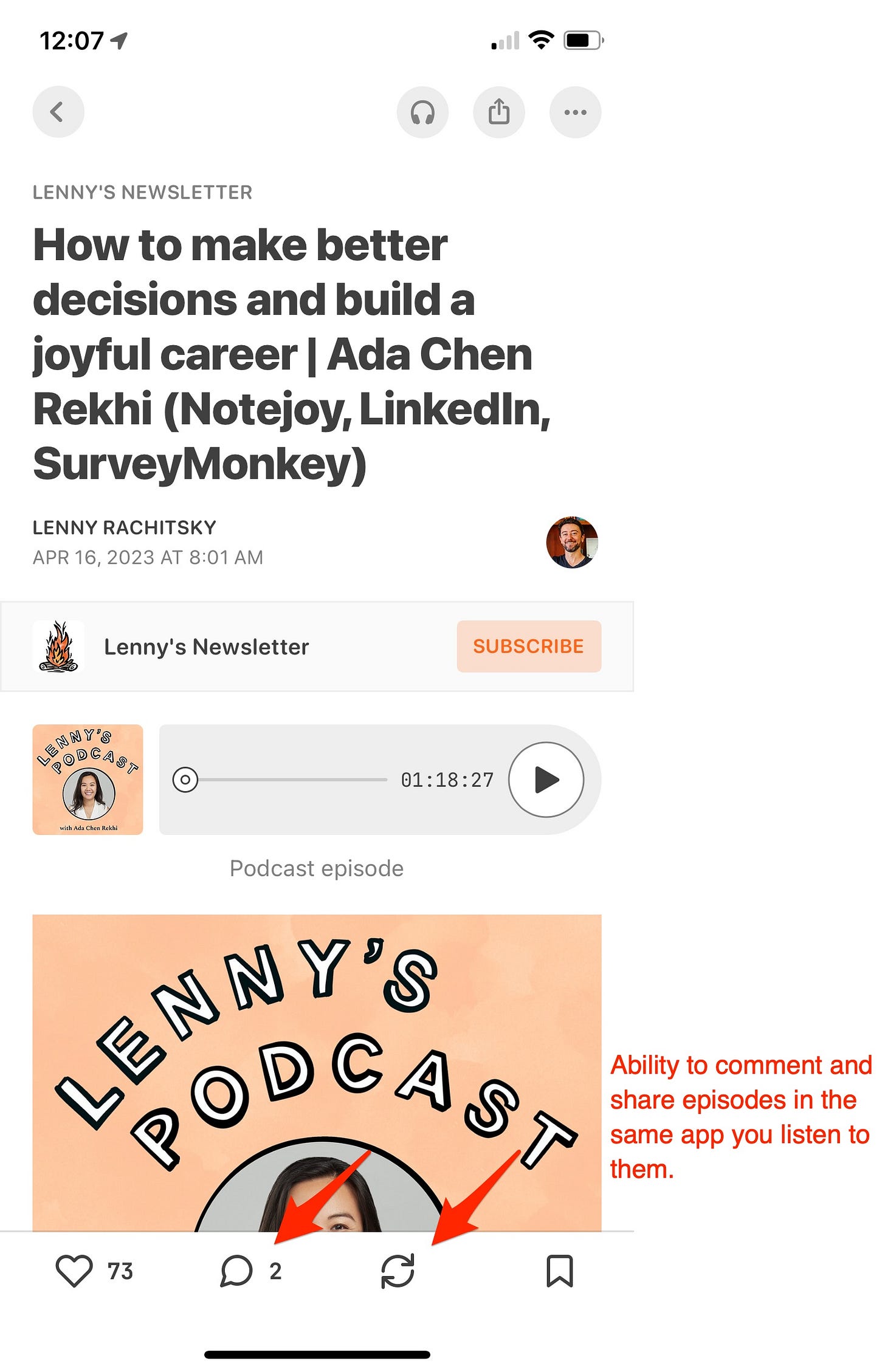I knew when I started this newsletter, I was being a tad hypocritical.
Content Marketing is Dead preaches about the evolution of content marketing. Specifically, I believe that:
The text-based foundation of content marketing is going away. Video, audio, and visual content are just as important when it comes to reaching and engaging with your audience.
Creating content one piece at a time — and not building a multimedia approach into your creation process — is unsustainable and a waste of resources.
And yet, when I decided to start this new project, I stuck to my comfort zone (text), because of limited time and resources.
I knew that in the long-term, exclusively creating a text-based newsletter wasn’t going to meet my brand goals, nor was it demonstrating how to best use content to create a thriving brand.
So I’m very excited to announce that Content Marketing is Dead is expanding to include a podcast. And I’d like to explain why I’m going to host the podcast on Substack and why I’m duplicating this newsletter on Linkedin and Substack.
1. Why I Started My Newsletter on Both Linkedin and Substack
When I started this newsletter, I knew I wanted to publish each issue on both Linkedin and Substack.
(You can find my newsletter on Linkedin here.)
Pro: Be Where Your Audience Is
The big reason? It’s more findable that way. If I’m taking the time to write out a long-form newsletter, why not post it in multiple places? This enables me to expand my reach with minimal extra effort.
Pro: UX AND ROI Win: Blog and Newsletter in One
Linkedin and Substack also share one important thing in common: they both allow subscribers to have the experience they prefer. Both Linkedin and Substack email new issues to subscribers, allowing them to consume the content in their inbox or by visiting the site.
Con: SEO
The biggest potential pitfall to posting the same content in two places is SEO. Google’s not a big fan of duplicated content, and if I want my Substack to have an organic presence in the future, I may need to rethink this. But for now, having visibility on two platforms is more important.
Linkedin = Stronger Findability and Shareability
But both platforms have their strengths and weaknesses. With a much larger user-base, people will more naturally find this newsletter on Linkedin, and I already have a small following on the platform. Linkedin is set up in a way to make it easy for people to share content.
Substack = More Versatile Brand Hub
On the other hand, Linkedin has fewer connected tools to expand a brand (like a branded website or podcast hosting). Overall, there are fewer options to make the newsletter a legit brand hub like you can with Substack.
2. Why I’m Starting My Podcast on Substack
Here’s where I’m really in love with what Substack is doing for individual creators.
Substack creates a one-stop-shop for a branded website, newsletter, and podcast with minimum effort to get set up, easy tools to grow and engage with your audience, and publish consistent content.
For instance, check out Lenny’s Newsletter, a Substack about growing a product and career as a product manager.
At first glance, this might look like a typical influencer’s website, with a blog, podcast, and even CTAs to join Lenny’s Slack community. But Substack has some fun features that encourage fan engagement.
New Podcast Episode Notifications Are Built-In
Anytime you publish a new podcast, it emails all of your newsletter subscribers and notifies followers via the Substack app. So people interested in your podcast can also sign up for your newsletter and get double the value.
Substack’s app doubles as a newsletter reader and podcast streaming app, which means people can follow creators they like and engage with their content in multiple ways in one app.
Communication Tools Are Also Built-In
Subscribers to your newsletter can engage with you via the Substack app. As a tool with growing popularity, Substack users are often already on the app and can interact with multiple brands in one tool.
Plus, it’s the only podcast streaming platform that I know of that has commenting and sharing functionality built in.
Substack Limitations to Be Aware Of
If I’m winning you over to Substack, there are limitations to consider.
Since, at its heart, Substack is an email marketing tool, there are big limitations regarding the kinds of content you can post, how you can format that content, plugins, etc. You’re not going to have the flexibility of a typical CMS like WordPress or the analytics of something like HubSpot. Overall, it was designed for journalists and other writers. It was not designed for businesses.
Substack’s podcasting functionality is also a work in progress, and its limitations can be frustrating. For instance, while podcasting pages feature a “listen on” drop-down, the options are very limited. You can’t add Spotify or Google Podcasts to the list. And the newsletter’s limited layout makes it difficult to add additional “listen” buttons that could link to the streaming service a user prefers.
Overall, for me at least, the ease of putting out three forms of content (a blog post, newsletter, and podcast) with one click of the “publish button,” is well worth the limitations.
What to Expect From the Content Marketing Is Dead Podcast
I’m interviewing a diverse array of marketing specialists about how content marketing is evolving and how content fits in the larger marketing ecosystem.
Most episodes will be double interviews with two guests who may or may not know each other and have unique perspectives on a given topic.
For instance, for my first episode (coming next week!), I spoke to Nathan Collier and Brooklin Nash — two leaders in content marketing — about what ChatGPT can and cannot do for content marketing, among other topics.
Over the next few weeks, you’ll also hear from:
Chelsea Castle, content lead at Lavender AI and Shawn Nichols, founder of the UX design firm Metriq, about usability and brand voice.
Andrew Nicoletta, senior manager of content marketing at ServiceTitan, and Cecilia Li, content marketing manager at NexHealth, about marketing to local businesses.
Josef Newton, founder of Sway, about B2B video marketing.
Want to be a guest? Email me at [email protected]!







